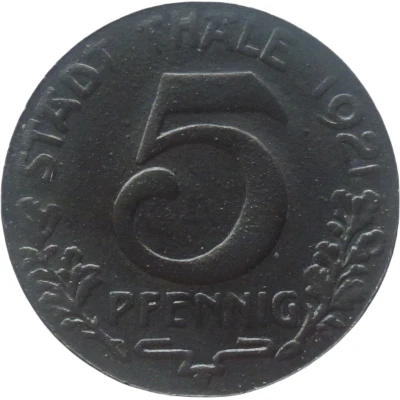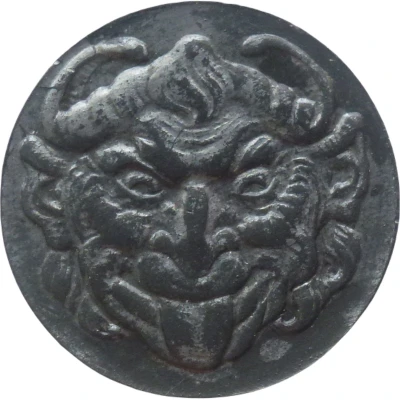


© Willem63 (CC BY-NC-SA)
5 Pfennigs - Thale am Harz
1921 year| Zinc | 1.1 g | 16.0 mm |
| Issuer | City of Thale am Harz (Prussian province of Saxony) |
|---|---|
| Period | Weimar Republic (1918-1933) |
| Type | Standard circulation coin |
| Year | 1921 |
| Value | 5 Pfennigs (5 Pfennige) (0.05) |
| Currency | Mark (1914-1924) |
| Composition | Zinc |
| Weight | 1.1 g |
| Diameter | 16.0 mm |
| Thickness | 1.0 mm |
| Shape | Round |
| Technique | Milled |
| Orientation | Medal alignment ↑↑ |
| Demonetized | Yes |
| Updated | 2024-10-04 |
| Numista | N#146519 |
|---|---|
| Rarity index | 88% |
Reverse
Image of a devil's head
Edge
Plain
Comment
Issuing body: [Gemeinde (seit 1921 Stadt), Provinz Sachsen].Interesting fact
The 5 Pfennigs - Thale am Harz 1921 coin was minted during a time of economic turmoil in Germany, known as the "Inflationary Period" (1914-1923). During this time, the value of the German mark (the national currency) plummeted, and prices for everyday goods skyrocketed. As a result, many Germans turned to alternative forms of currency, such as local emergency currencies like the 5 Pfennigs - Thale am Harz 1921 coin. This coin, made of zinc and weighing only 1.1 grams, was issued by the City of Thale am Harz in the Prussian province of Saxony, and was used as a substitute for the rapidly devaluing national currency. Despite its humble appearance, this coin is a fascinating piece of history that highlights the economic challenges faced by Germany during this time period.